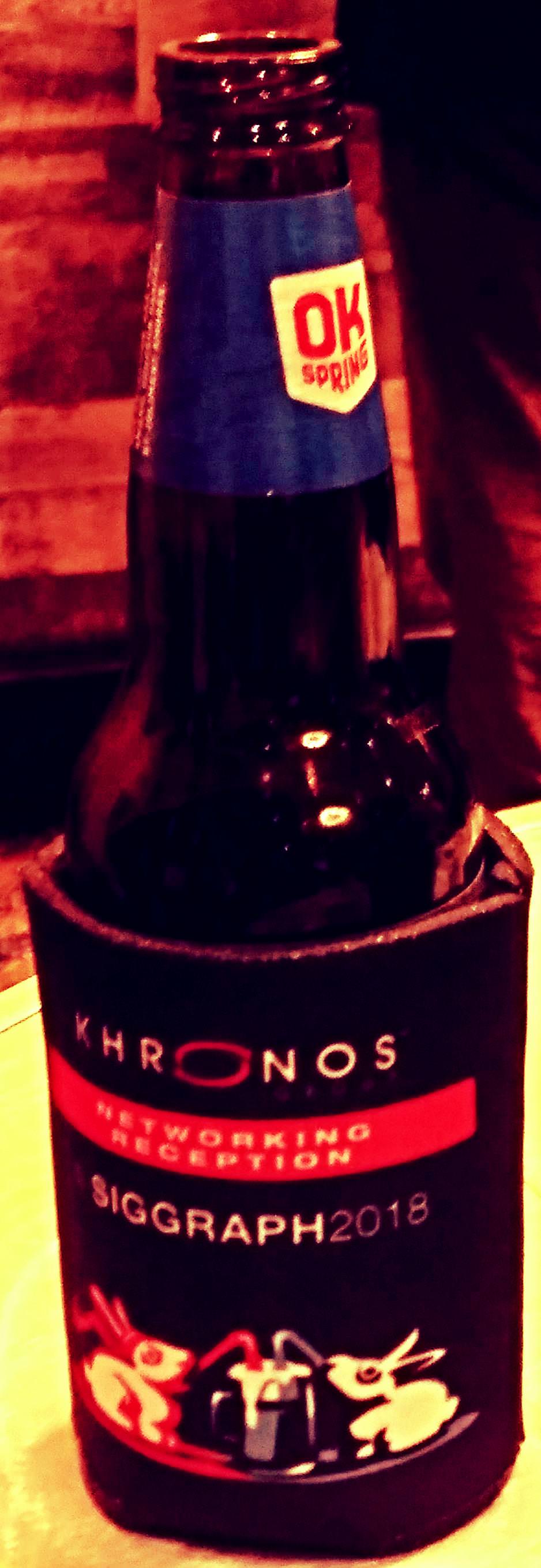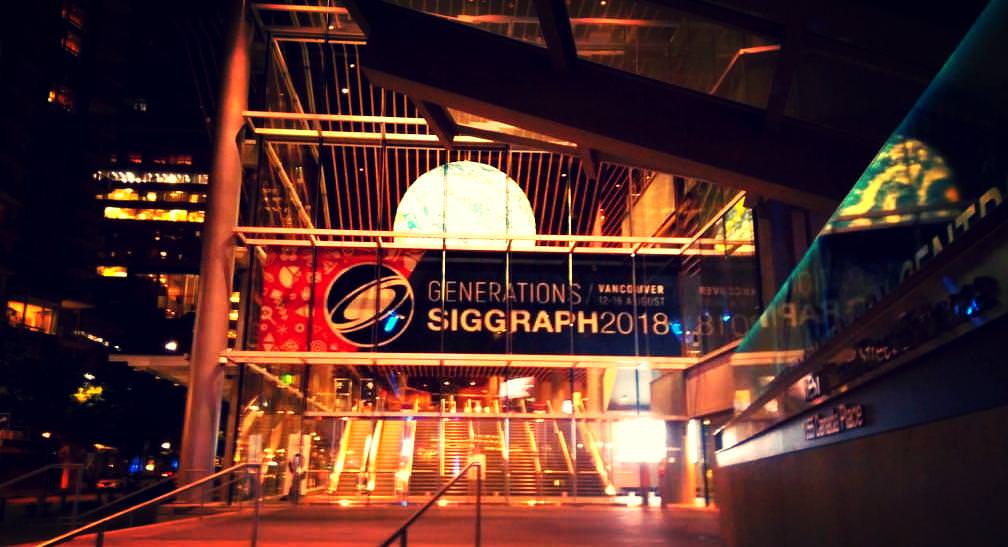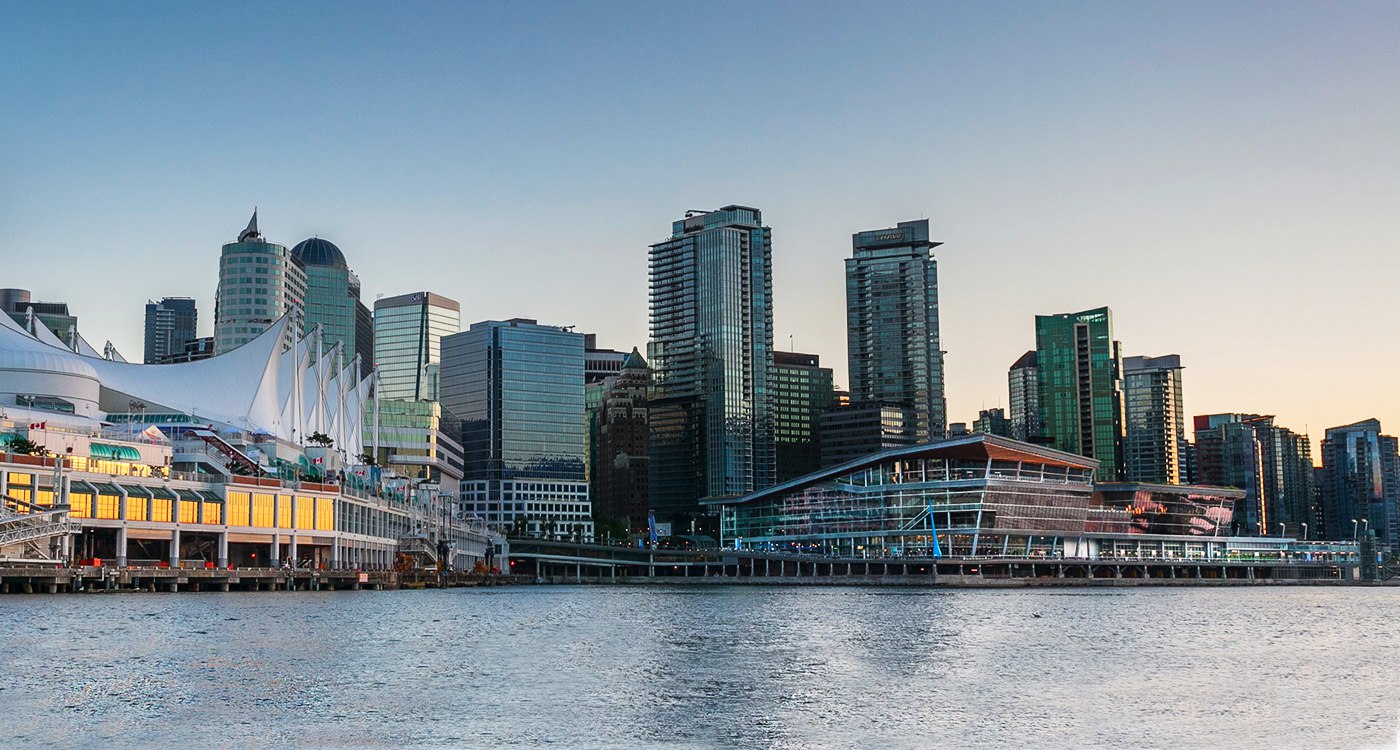About 2 weeks ago, I attended SIGGRAPH 2018. I am still very excited about the whole event, and I am very thankful that Igalia (the consultancy company I work for) and specifically the Graphics Team selected me to go, despite this being my first year at the company! 😀
SIGGRAPH is the biggest event for companies and individuals interested in Computer Graphics, Animation, Virtual Reality, Games, Digital Art, Mixed Reality and Emerging Technologies. There are several parallel talks, courses, exhibitions, galleries, demos, festivals and acts of collaboration taking place in parallel and one can see the latest advances in research and development, some state of the art technologies, inventions and a lot of art! And of course: meet interesting people who work and create in all these fields!
This year, SIGGRAPH took place in Vancouver‘s convention center East and West buildings during the week of the 12-16 August. Although 5 days might usually seem enough for a conference they are definitely very few for SIGGRAPH! It was hard to decide where to go while having at least 2 very interesting events running in parallel every hour! In general, I tried to attend as many courses and technical talks I could and especially those that wouldn’t be recorded, but I also took some time to explore the Immersive Pavillion, the VR theater and the Art Gallery, watch the Animation Festival at the Electronic Theater, attend some BoFs and go to the traditional Khronos Networking Event on Wednesday afternoon.
Highlights from each day (by date):
Sunday 12/08/2018:
- Introduction to the Vulkan Graphics API (a 3 hours course on Vulkan by Mike Baley).
- A quick first visit to the Immersive Pavillion (several XR demos, exhibition about the VR and stereo vision history, and more).
- Design and Implementation of Modern Production Renderers (a panel discussion among Matt Pharr, Per Christensen, Luca Fascione, Christopher Kulla, Marcos Fajardo and Peter Kutz, who work on 5 famous non-real-time renderers for film and animation. They shared technical details about their design goals and implementations and compared their respective designs).
- Technical Papers Fast Forward (a fast-forward of the more than 100 technical papers presented during the SIGGRAPH days, where each presenter was given a very short amount of time to present the topic of his upcoming presentation).
- What I missed: the Demoscene BoF (the room was overcrowded :/) and the Jurassic Park 25th Anniversary Screening.
Monday 13/08/2018:
- Advances in Real-Time Rendering in Games Part 1 by Guillaume Abadie, Danny Chan, Steve McAlley coordinated by Natalya Tatarchuk (a 3 hours course about rendering techniques for video game effects and scenes given by Game Developers that work in well-known game engines).
- Advances in Real-Time Rendering in Games Part 2 (the second part was mostly about physically based rendering and techniques such as path tracing and the road towards achieving realtime performances). Contributors: Sebastien Lagarde, Evgenii Golubev, Mat Pharr, Morgan McGuire, Eric Heitz and Stephen Hill, coordinated by Natalya Tatarchuk).
- a visit to the VR Theater where I watched the Screening A animations: Arden’s wake expanded, Trinity, The legend of Hanuman, Under Neon Lights (I particularly liked the Trinity one).
- Reception Event (the international community’s social event: nothing very special but I had the chance to talk to artists and producers from the Animations world which was quite interesting!).
Tuesday 14/08/2018:
- Intel Exhibitor Session: Fully automated UV unwrapping for Arbitrary Meshes (Eskin Steenberg presented a program he develops to unwrap 3D models and wrap them back automatically).
- A visit to the main Exhibition (new hardware systems, software tools, creative services and hundreds of companies: preview here), Art Gallery (contemporary media artworks and art pieces by communities also historical stuff: preview here) and Emerging Technologies (technologies that focus on three core areas of human life: health, home and entertainment) halls. Exhibits from wearable devices to robots: preview here.
- Intel Exhibitor Session: Dynamic Resolution Techniques for Intel Processor Graphics by Trapper Mc Ferron and Adam Lake (a talk about using two 2xMSAA render targets each half resolution in width/height instead of a full resolution single frame and combine them to construct a full-resolution image recostructing the static parts of the scene).
- Second-Order Occlusion-Aware Volumetric Radiance Caching by Julio Marco, Adrian Jarabo, Wojciech Jarozc and Diego Gutierrez (a technical paper on a method for efficient rendering of participating media that computes the radiance derrivatives to perform error-bounded interpolations from sparce-shaded points).
- Gradient-domain Volumetric Photon Density Estimation, by Adrien Gruson, Binh-Son Hua, Nicolas Vibert, Derek Nowrouzezahrai and Toshyia Hachisuka (a technical paper on algorithms for the volume density estimation algorithms that use photon points, beams and planes and a new gradient-domain light transport formulation for participating media).
- Fractal Multiverses in VR by Johannes Saam, Mariano Merchande, Patrick Beavers, Rongxuan Jin, Aron Hjartarson and David Bees (a talk about the design decisions for a real-time fractal explorer and the approach they followed to render fractals in VR headsets).
- Animation Festival in the Electronic Theater (preview here).
- Things I missed: That’s elastic! (papers related to real-time simulation of deformable objects. The talk was overlapping with the Volume Rendering and Global Illumination technical papers presentation :/).
Wednesday 15/08/2018:
Morning:
- Water Surface Wavelets, by Stefan Jeschke, Tomas Skrivan, Nuttapong Chentanez, Matias Mueller-Fischer, Miles Macklin, Chris Wojtan (technical paper about an optimized simulation method for waves from 2cm to 80m interacting with boundaries).
- Monte Carlo Methods for Physically Based Volume Rendering (course on methods that use Monte Carlo integration to simulate the light transport by Jan Novák (coordinator), Iliyan Georgiev, Johannes Hanika, Jaroslav Křivánek and Wojciech Jarosz).
Afternoon:
The afternoon was dedicated to the Khronos group’s events. Igalia is a member of the Khronos group and we make contributions to some Khronos APIs implementations as part of our work on mesa 3D. As expected, we have a special interest in the 3D Graphics APIs (OpenGL and Vulkan) advancements and techniques .
- 3D graphics with Vulkan and OpenGL by Tom Olson, Piers Daniel, Neil Trevett, Lei Zhang, Eric Berdhal, Hai Nguyen, Dan Baker and Mikko Strandborg. (The traditional BoF on what’s happening with Khronos’s open standard native 3D APIs and the latest about technical features, applications, tools and ecosystem developments in Vulkan and OpenGL).
- Khronos Networking Reception: a networking event organized by members of the Khronos group with presenters, developers and other people showing demos, eating pizza and drinking beers!
Thursday 16/08/2018:
- Moving Mobile Graphics by Sam Martin, Andrew Garrard, Rob VanReenen, Hans-Kristian Arntzen, Victor Prisacariu, Felipe Lira, Jiwen Cai (a course on mobile graphics and mobile XR mostly about best practices for real-time rendering and computer vision research on mobile devices).
- Intel Exhibitor Session: Open Source Interactive CPU Preview Rendering with Pixar’s Universal Screen Description by Carson Brownlee (https://github.com/carsonbrownlee/USD).
- ‘Star Wars: The Last Jedi’ – Effects Simulation by Miguel Perez Senent, Mihai Chioroba, Rick Hankins, Huai Yuan Teh (a talk on the implementation of Star Wars effects ranging from exploding spaceships to character and environment effects).
- A Collocated Spatially Adaptive Approach to Smoke Simulation in Bifrost by Michael B. Nielsen, Konstantinos Stamatelos, Morten Bojsen-Hansen, Duncan Brinsmead, Yannick Pomerleau, Marcus Nordenstam and Robert Bridson (a talk on a new Eulerian method used for the simulation of smoke on a structured spatially adaptive voxel grid with velocity samples collocated at voxel corners in the Autodesk Bifrost procedural environment).
I might have forgotten some other good talks or papers I watched. Some of them were overlapping with others and I partially attended them. There were also a lot of amazing exhibits in the exhibition halls that I would need dozens of posts to describe them. You can see some of them if you follow the links above or search the SIGGRAPH2018 website or on YouTube.
As an overall, SIGGRAPH was an unforgettable experience. As it was the first CG-devoted conference I have attended so far, I was even more excited about everything there! For that, I’d like to close this post with another big thanks to Igalia and my team!



